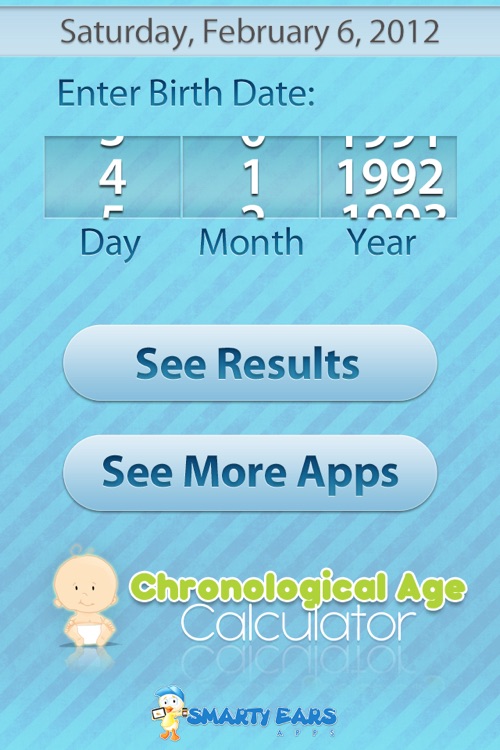

Adopting a healthy lifestyle could have a profound effect on reducing excess heart age.
#THE CHRONOLOGICAL AGE OF AN IMPROVEMENT IS TRIAL#
A randomized intervention trial concluded that communicating CVD risk using heart age versus absolute risk resulted in a greater reduction (-1.5 versus -0.3 year decrease in heart age) in CVD risk over the 1-year intervention period ( 22). One study comparing the effect of using absolute CVD risk versus heart age on participants' risk perceptions and intention to make lifestyle changes suggested that heart age messaging led to significantly higher perceived risk and was more emotionally impactful for participants at higher actual CVD risk levels ( 7). Greater achievement of the ABCS, in addition to control of other CVD risk factors and reductions in racial and geographic CVD disparities, are critical for meeting the initiative's goal of preventing 1 million heart attacks, strokes, and other CVD-related events in 5 years.Īlthough traditional absolute CVD risk (e.g., 10-year CVD risk score) should continue to be used by clinicians to inform treatment and management, heart age might be an effective way to communicate individual-level risk for developing CVD and spur action to improve health. One important component of the Million Hearts initiative ( ), a national effort to improve access to and quality of care to reduce the incidence of CVD through community and clinical prevention strategies, is to focus on the "ABCS" (aspirin when appropriate, blood pressure control, cholesterol management, and smoking cessation). Statistically significant (phigh school), annual household income (75% of CVD could be prevented or postponed by controlling and managing specific CVD risk factors through lifestyle changes and/or adherence to recommended treatments ( 19– 21). Results: Overall, average predicted heart age for adult men and women was 7.8 and 5.4 years older than their chronological age, respectively. These results were then translated into age-standardized heart age values, mean excess heart age was calculated, and the findings were compared across groups. Methods: Weighted 20 Behavioral Risk Factor Surveillance System data were applied to the sex-specific non–laboratory-based Framingham risk score models, stratifying the results by age and race/ethnic group, educational and income level, and state. This study estimates heart age and differences between heart age and chronological age (excess heart age) and examines racial, sociodemographic, and regional disparities in heart age among U.S. Heart age (the predicted age of a person's vascular system based on their cardiovascular risk factor profile) and its comparison with chronological age represent a new way to express risk for developing cardiovascular disease. Introduction: Cardiovascular disease is a leading cause of morbidity and mortality in the United States. Quanhe Yang, PhD 1 Yuna Zhong, MSPH 1 Matthew Ritchey, DPT 1 Mark Cobain, PhD 2 Cathleen Gillespie, MS 1 Robert Merritt, MA 1 Yuling Hong, MD, PhD 1 Mary G. On September 1, 2015, this report was posted as an MMWR Early Release on the MMWR website ( ). Please note: An erratum has been published for this article. Vital Signs: Predicted Heart Age and Racial Disparities in Heart Age Among U.S.


 0 kommentar(er)
0 kommentar(er)
